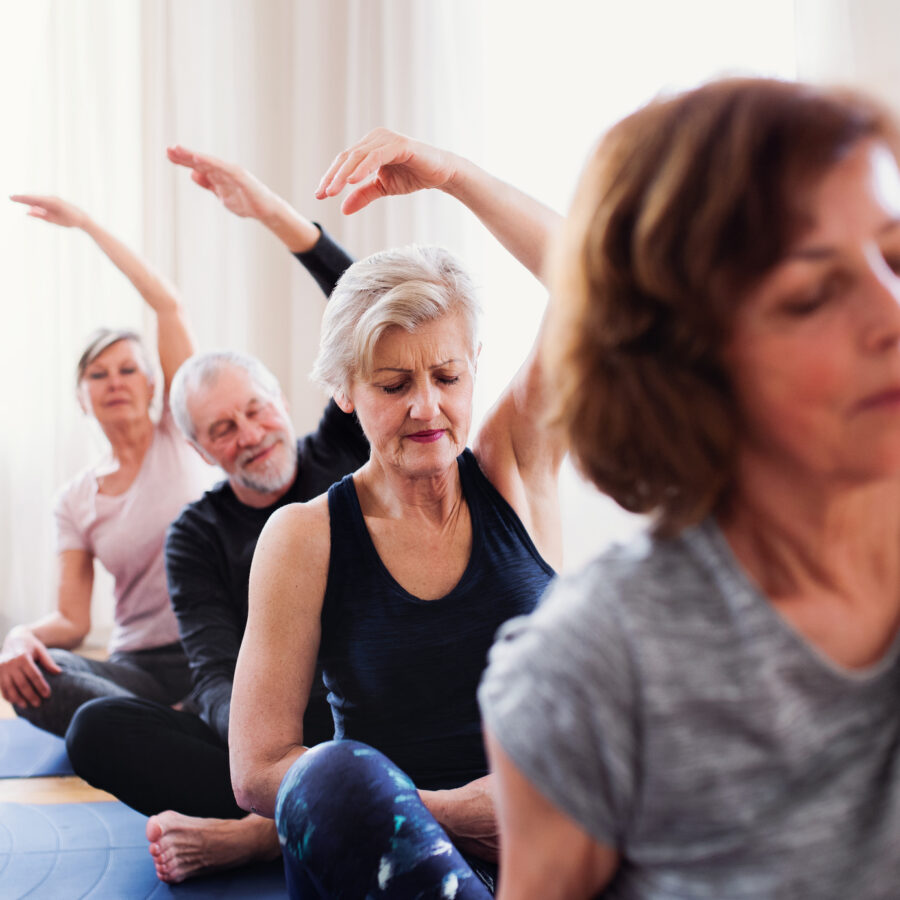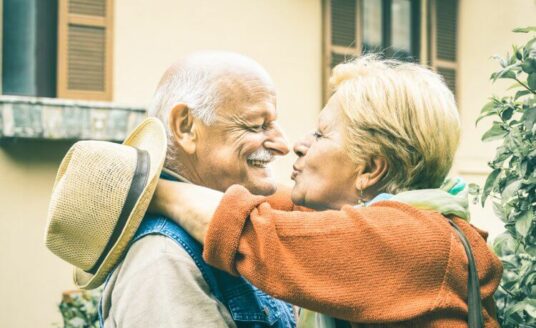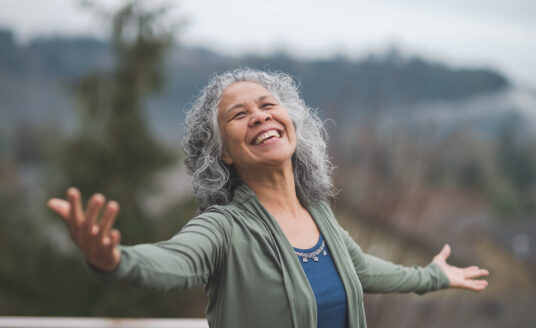Most of us envision a yoga practitioner as young, extremely flexible person contorted into an impossible position. It is time to shatter that perception because yoga can be practiced to help senior adults as well.
Movement is important to keep us strong and able to complete the tasks of our daily lives. Milder forms of yoga have been designed to do just that for seniors.
Consult your physician first
Yoga includes breath control, meditation, and specific bodily postures to promote emotional, mental, and physical health. Modified, less strenuous yoga poses can be adopted by senior adults, but your physician should be consulted before starting a program.
It is also a good idea to consult a certified yoga instructor to learn the correct methods for practicing yoga. There is some instruction available online. Also, for safety’s sake, the presence of a caregiver would be advisable when you begin a yoga program.
None of the yoga movements should hurt. There is gain without pain.
1. Anxiety Reduction
There is evidence that yoga may ease anxiety, particularly anxiety connected to chronic medical conditions commonly associated with senior adults.
Much of yoga is focused on breathing and listening to your body. As a result, you are less prone to negative thoughts and emotions as you learn to concentrate on the present (called mindfulness) and not be obsessed by what might happen in the future or what has happened in the past.
As you practice yoga and become mindful of not just your body but also of your thoughts and emotions, you will probably become more connected to and aware of your environment.
2. Improved Blood Pressure and Pulmonary Function
Oxidative stress is an imbalance in the body, which can lead to cell and tissue damage. This damage plays a role in the aging process and is linked to a number of chronic conditions, including high blood pressure.
According to the National Center for Biotechnology Injury (NCBI), a study shows, “findings suggest that yoga is an effective means to reduce oxidative stress and to improve antioxidant defense in elderly hypertensive individuals.”
The NCBI also cited a study concerning yoga and pulmonary function that stated, “It was concluded that a 12-week yoga program significantly improves pulmonary function of aged women.” Further, the study conclusion said, “These results draw attention to the possible importance of yoga practice in the elderly as a preventative exercise to impair age-related morbidity and improve the quality of life of these populations.”
3. Improved Fitness and Bone and Joint Health
Harvard Health Publishing of Harvard Medical School cites a small study of sedentary individuals who practiced yoga twice a week for eight weeks for a total of 180 minutes. The study revealed, “participants had greater muscle strength and endurance, flexibility and cardio-respiratory fitness.”
As we age, our bone density significantly decreases. Without proper nutrition and exercise, the loss of bone density can become more extreme, resulting in osteoporosis.
Sustaining joint health requires conditioning muscles and placing enough pressure on our bones to make them stronger and denser. Yoga provides a low-impact, joint-friendly method of building muscle and bone.
4. Increased Confidence
As you become more proficient in yoga, worry and stress would hopefully be replaced by a growing confidence as you see improvement in your mental and physical wellbeing.
Your mobility improves, enabling you to get out more which, in turn, gives you a positive feeling about yourself and what you are able to accomplish.
5. Pain Management
The American College of Physicians recommends yoga as one of the first-line treatments of chronic low-back pain.
Gentle stretching of muscles and bones can reduce pain by increasing blood flow. But pain involves more than muscle and bone. Tension, anxiety, depression, and fear can also worsen the pain. Yoga also deals with techniques like controlled breathing and quiet mindfulness to reduce the thoughts and emotions that can heighten our sense of pain.
6. Improved Balance and Stability
Balance problems are common among senior adults. Losing the ability to maintain stability and control leads to falls that can have devastating consequences for seniors.
Yoga includes poses targeted to a person’s sense of balance as the practitioner tunes out external distractions and focuses on maintaining proper position.
Warning: Be especially careful when performing balance exercises. Stay near a wall or chair to steady yourself if needed.
To learn about other ways you can stay active and improve your health, check out the Health & Wellness section of our blog.
With 133 years of experience, our non-profit has set the bar for quality and compassionate senior living in St. Louis. If you are considering independent living, we encourage you to tour our communities, including Bethesda Barclay House – Clayton, Bethesda Gardens – Kirkwood, Bethesda Orchard – Webster Groves, Bethesda Terrace – South County, Village North Retirement Community – Florissant, and The Oaks at Bethesda Villas – Kirkwood/Webster. With our full spectrum of care, including independent living, assisted living, memory care, and skilled nursing, rest assured that all of your care needs will be met by highly-trained nurses and aides.



